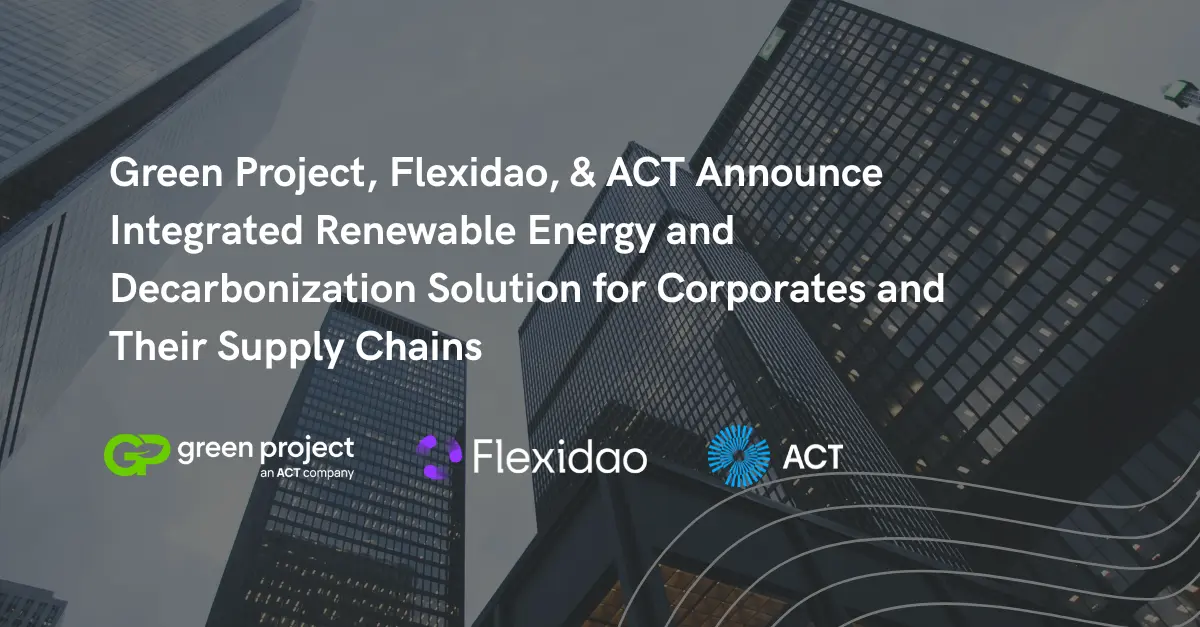The GHG Protocol Revision: What will be Reviewed in Scope 2 Reporting?
The GHG Protocol Revision: What will be Reviewed in Scope 2 Reporting?
Explore the upcoming revisions to the GHG Protocol corporate standards, which guide businesses in accurately measuring and managing indirect energy emissions.
We are thrilled to share that our CPO, Simone Accornero, has been nominated from over 1,300+ individuals who applied to be part of the Greenhouse Gas (GHG) Protocol Technical Working Groups. As a member of the Scope 2 group, he will play an important role in developing the new technical content for the GHG Protocol corporate standards and guidance in relation to indirect energy emissions.
This comes at a pivotal time for the energy industry, where corporate spend in clean energy procurement has reached an all time high, with 55 GW of capacity contracted last year. This is a 12% growth on the previous year and has been partly spurred on by the rise in popularity of PPA contracts.

As the corporate renewable energy industry and procurement practices continue to grow, the guidelines underpinning how businesses report on energy emissions are growing alongside. This blog will provide more context on the GHG protocol, explore why they are reviewing their guidelines and take a look at what the Scope 2 review will focus on.
What is the history behind the GHG Protocol and why the review?
The Greenhouse Gas Protocol was established to create a common framework for organizations to account for the GHG emissions resulting from their operations. It was developed through a collaborative effort between the World Resources Institute (WRI) and the World Business Council for Sustainable Development (WBCSD).
The first edition of the GHG Protocol Corporate Standard was published in 2001. It provided a comprehensive set of guidelines for organizations to measure and report their GHG emissions.
It has grown to become the most widely used international accounting framework for measuring and managing greenhouse gas (GHG) emissions. It is the foundational guidance which underlies many voluntary reporting schemes like RE100 and CDP. More recently, it has served as the foundation for mandatory disclosures like the European Sustainability Reporting Standards (ESRS) and the Security and Exchange Commission's (SEC) Climate Related Disclosure in the US. You can see the full list of the disclosure schemes and sustainability programs the GHG Protocol has influenced below.


Since the GHG Protocol corporate standards were first published, there have been significant advancements and shifts in the field of greenhouse gas emissions reduction. These include the growing adoption of net-zero targets, and the introduction of stricter mandatory and voluntary climate disclosure regulations. Corporations have gained extensive practical experience with the standards, and thousands of companies have used them to measure and report their emissions. Researchers have also analyzed their effectiveness and identified areas where the standards could be evolved to more accurately account for GHG emissions.
Given these developments, the GHG Protocol is undertaking a review to assess whether updates or additional guidance are needed to address the evolving landscape. This review aims to ensure that the standards remain relevant, practical, and supportive of new climate goals and regulations, while enhancing their implementation. This includes a review of Scope 2 and 3 emissions, alongside reviews of corporate standards, actions and market instruments.
What will be covered in the Scope 2 Technical Working Group?
As the technical working group comes together, the guidance around how Scope 2 emissions are measured, and the need for further amendments, will be discussed. There are a number of topics that will be the focus of the sessions, These include but are not limited to:
- Location-based method technical improvements
Location-based emissions look at the average emissions from the electricity grid in your region. In practice, this means that if your local grid relies heavily on coal, your location-based emissions would be higher, regardless of where you buy your electricity. The group will review if any changes or updates need to be made to this method, such as how geographical areas are defined, or if location based emissions need to be accounted for using more granular, near real-time data.
- Market-based method technical improvements
Market-based emissions focus on the electricity contracts and purchases your company makes. If you buy renewable energy (like solar or wind) through the use of contracts of energy attribute certificates (EACS, known as renewable energy Certificates in the US, guarantees of origin in the EU), your market-based emissions could be much lower.
In order to account for market- based emissions, market boundaries had to be established. These are the geographic and regulatory areas within which companies can source electricity through contractual instruments (such as renewable energy certificates or power purchase agreements) to account for their emissions. Currently, North America and Europe are considered single markets, allowing companies to purchase renewable energy certificates (RECs) across countries in these zones. In contrast, regions like LATAM and APAC have tighter guidelines, treating each country as a separate market.
The group will be reviewing if this definition of market-based emission and boundaries is comprehensive enough to accurately measure a company’s carbon footprint, and if any amendments need to be made.
- Role of project-based accounting methodology relative to scope 2 accounting
This will explore how project-based accounting (which tracks emissions reductions from specific renewable energy projects) should be integrated or considered in relation to Scope 2 emissions accounting. It will assess how these methodologies align or interact.
- Guidance for regional variation in energy markets
This refers to addressing differences in how energy markets function across different regions. The group will discuss how to handle regional variations, such as availability of renewable energy, grid emissions intensity, and local regulations, to ensure accurate Scope 2 reporting.
- Interaction with policies and programs
This will cover how Scope 2 accounting should align or interact with government policies, regulations, or energy programs (e.g., renewable energy incentives, emissions trading schemes) that may impact emissions reporting.
- Interactions across Scope 2 and Scope 3
The group will review how Scope 2 emissions influence or interact with Scope 3 emissions (which include indirect emissions from the supply chain), ensuring that the methods used in accounting for Scope 2 emissions do not create inconsistencies with Scope 3 reporting.
- Guidance for purchased steam, heat, and cooling
The group will aim to provide clarity on how companies should account for emissions associated with purchased steam, heat, and cooling—sources of energy not related to electricity but still relevant for Scope 2 reporting.
- Utility-specific guidance and clarification on T&D losses
This will focus on developing guidance related to transmission and distribution (T&D) losses, which are emissions associated with energy lost while electricity travels through the grid from utilities to end users.
- Technical methodology guidelines for data providers
This involves ensuring that third-party data providers who offer emissions data (such as electricity emission factors) have consistent and accurate methodologies, helping businesses calculate their Scope 2 emissions correctly.
- Technology-specific guidance
This refers to offering detailed guidance for specific energy technologies (e.g., solar, wind, hydropower), ensuring accurate emissions accounting for different types of renewable and non-renewable energy sources.
With our involvement in the technical working group, Flexidao will remain at the forefront of the GHG Protocols review. Sign up to our newsletter to keep up to date on developments as they unfold.


.webp)





